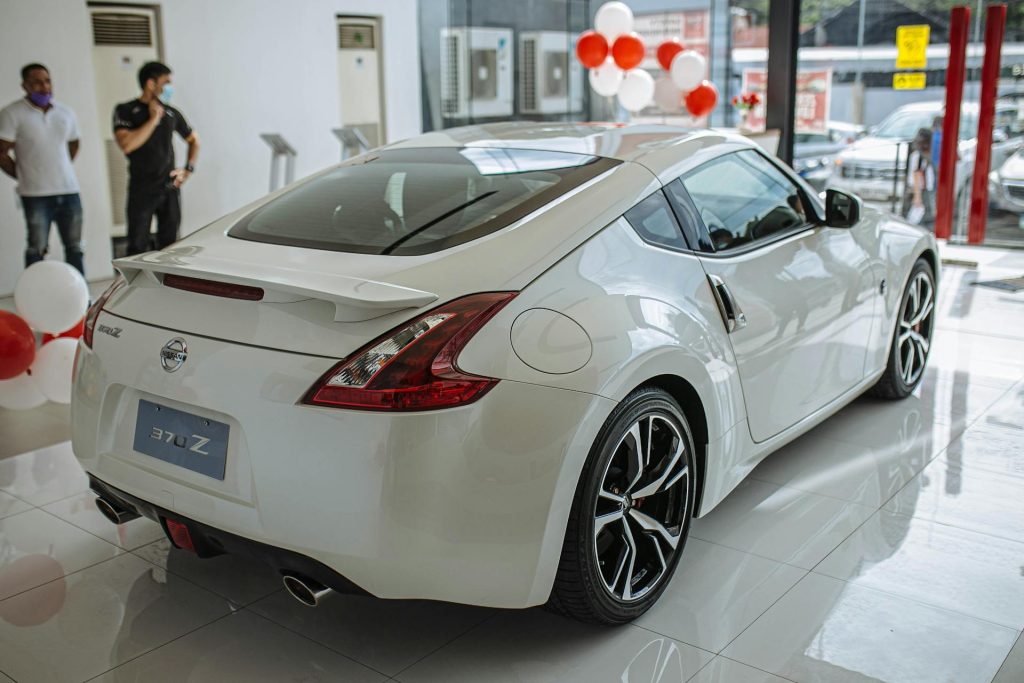Understanding the Costs: Delving into Car Payments and Car Insurance
Car ownership comes with exciting freedom, but also financial responsibilities. Two major expenses you’ll face each month are your car payment and your car insurance premium. But how much do they really cost, and which one typically drains your bank account more? CheapInsurance.com explores the cost factors associated with each, helping you gain a clearer picture of your monthly automobile expenses.

Key Takeaways:
- Awareness is key: Gaining a clear understanding of average costs, factors impacting them, and your individual profile is the first step to making informed choices.
- Prioritize wisely: Evaluate your financial goals, risk tolerance, and lifestyle choices to determine which expense requires more focus in your budget.
- Embrace saving strategies: Utilize the various tips provided to optimize your spending on both car payments and car insurance.
- Seek professional guidance: If needed, don’t hesitate to consult a financial advisor for personalized advice tailored to your specific situation.
First, let’s tackle car insurance
The Price Tag. This isn’t a one-size-fits-all answer. Your auto insurance premium depends on various factors, including your driving history, car type, age and location, and in some states, even your credit score. We’ll delve deeper into these influencing factors in the next section.
Types of Coverage. Remember, different coverage options within your policy impact the overall cost. Liability, collision, and comprehensive are essential, but additional protections like rental car reimbursement or roadside assistance can add to the premium.
Hidden Costs. Don’t forget potential fees! Be mindful of cancellation fees, late payment penalties, or additional charges for specific endorsements.
Now, onto car payments
Loan Amount and Interest. This significantly impacts your monthly payment. A larger loan amount or higher interest rate means higher payments. Consider exploring different loan options and negotiating the best interest rate possible.
Loan Term. Shortening the loan term increases your monthly payment but decreases the total interest paid. Conversely, a longer term reduces monthly payments but extends the repayment period and overall cost.
Down Payment. A larger down payment lowers the loan amount, resulting in a smaller monthly payment and potentially reduced interest charges.

Comparing the Numbers: Balancing Car Payments and Car Insurance Costs
So, you’ve grasped the cost factors for each expense. Now, the question: Which one typically bites deeper into your wallet? While there’s no definitive answer (your individual circumstances influence it heavily), let’s explore some statistics and compare apples to oranges (or in this case, wheels to premiums):
Car Insurance
Average Annual Cost. According to Bankrate, the average annual cost of car insurance in the US in 2024 is $2,545, translating to roughly $212 per month. However, remember this is just an average, and your actual premium could be significantly higher or lower depending on your profile.
Regional Variations. Geographical location significantly impacts auto insurance costs. Forbes Advisor reveals that drivers in Louisiana pay the highest average premium ($3,392), while those in Maine enjoy the lowest ($1,161). Check your state’s average cost for a more realistic comparison.
Driving Record Impact. A study by the Insurance Research Council (IRC) shows that drivers with clean driving records pay an average of 51% less for vehicle insurance than those with at-fault accidents. Maintaining a safe driving record can significantly reduce your insurance premium.
Car Payments
Average Monthly Payment. Edmunds reports that the average monthly auto loan payment in the US in 2024 is $667. Again, this is just an average, and your payment depends heavily on your loan amount, term, and interest rate.
New vs. Used. As expected, new cars come with higher average monthly payments than used ones. Edmunds reports an average payment of $774 for new cars compared to $557 for used cars.
Loan Term Influence. Opting for a shorter loan term increases your monthly payment but decreases the total interest paid. A longer term offers lower monthly payments but extends the repayment period and overall cost. Consider what works best for your budget and financial goals.
These are just some comparison numbers, and your personal situation plays a crucial role. Analyzing your individual car insurance quotes and potential loan options is essential for understanding your specific costs. Stay tuned for the next section, where we’ll help you prioritize spending and make smart financial decisions regarding your car ownership!
Prioritizing Spending: Striking the Right Balance for Your Car Costs
Now that you have a clearer picture of the typical costs associated with car loan payments and car insurance, it’s time to navigate the delicate dance of prioritizing your spending. Remember, there’s no one-size-fits-all answer, as it depends heavily on your unique financial situation, driving habits, and risk tolerance. Here are some key factors to consider:
Financial Goals
Short-term vs. long-term. Are you saving for a major purchase or focusing on debt repayment? A lower auto loan payment might free up funds for these goals, while prioritizing auto insurance could ensure financial security in case of an accident.
Emergency fund. Building a robust emergency fund is crucial for unexpected expenses. Consider how both expenses impact your ability to build or maintain your safety net.
Risk Tolerance
Driving habits. If you frequently travel long distances or have a history of accidents, prioritizing full coverage car insurance might provide peace of mind. Conversely, infrequent drivers with clean records might opt for lower coverage to save money.
Accident potential. Consider your typical driving environment and the potential cost of repairs or replacements due to accidents. Higher risk areas might warrant prioritizing higher insurance policy coverage, while safer environments could allow for lower coverage.
Lifestyle Choices
Car usage. Do you commute long distances daily or primarily just use your car for errands? Higher car usage justifies a greater focus on fuel efficient vehicles, potentially resulting in lower vehicle operating costs.
Vehicle type. Opting for a fuel-efficient car can decrease long-term fuel costs, allowing you to consider a slightly higher car loan payment, or potentially even a plug in electric vehicle.
- Don’t sacrifice safety for affordability. While it’s tempting to minimize both expenses, remember that having high quality affordable car insurance protects you financially in case of accidents. Ensure your coverage aligns with your risk tolerance and potential repair costs.
- Explore cost-saving options. Comparing auto insurance quotes, consider discounts for safe driving, or bundling policies, and compare loan offers to get the best interest rates.
Seek professional advice. If you’re unsure about prioritizing your spending, consulting a financial advisor can help you make informed decisions based on your specific circumstances.

Saving Strategies: Maximize Your Budget on Car Payments and Insurance
Balancing car payments and insurance costs without compromising your financial goals can seem like a tightrope walk. However, implementing smart strategies can help you optimize your budget and save money on both fronts. Here are some powerful tactics to consider:
Car Payment Savings
Negotiate the loan terms. Don’t shy away from negotiating the interest rate and loan term with lenders. A lower interest rate translates to significant savings over the loan period.
Increase your down payment. Putting down a larger down payment reduces the loan amount, leading to lower monthly payments and potentially shorter loan terms.
Consider refinancing. If you have good credit and interest rates have dropped since you took out your loan, refinancing to a lower rate can save you money.
Explore used car options. Used cars generally come with lower purchase prices and monthly payments compared to new ones. Consider the trade-off between upfront savings and potential repair costs.
Choose a fuel-efficient car. Lower fuel consumption reduces your long-term operating costs, freeing up more budget for your car payment.
Car Insurance Savings
Compare car insurance quotes. Don’t settle for the first quote you receive. Compare quotes from multiple insurance companies to find the best combination of coverage and price – cheaper car insurance is available, but you many have to search to find it.
Maintain a clean driving record. Avoiding accidents and traffic violations significantly reduces your risk score, leading to lower premiums.
Take advantage of discounts. Many companies offer insurance discounts for things like good driving history, low mileage, safety features in your car, or bundling policies.
Increase your deductible. Raising your deductible lowers your premium, but remember you’ll need to pay more out-of-pocket if you make a claim. Choose a deductible amount you’re comfortable covering in case of an accident.
Opt for paperless billing and automatic payments. Some insurers offer discounts for choosing paperless billing and setting up automatic payments.
Explore usage-based insurance. If you’re a low-mileage driver, consider usage-based insurance, where your car insurance premium reflects your actual driving habits, which may qualify you for inexpensive car insurance.
Balance savings with coverage. While saving money is important, ensure your car insurance provides adequate coverage for your needs. Don’t sacrifice essential protection for a lower premium.
Review your coverage regularly. As your driving habits or financial situation change, it’s crucial to review your coverage and adjust it accordingly. As your situation changes in a positive direction, take the opportunity to search for inexpensive auto insurance quotes.
Stay informed. Be aware of potential changes in your insurance costs due to factors like location, credit score, or policy adjustments.
By implementing these strategies and staying informed, you can strike the perfect balance between affordability and peace of mind when it comes to your car payments and car insurance.

Securing Your Car Ownership Journey – Informed Decisions, Financial Freedom
Navigating the financial aspects of car ownership can be complex, but understanding the interplay between car payments and car insurance is crucial for informed decision-making. Remember, there’s no one-size-fits-all answer, and the ideal approach depends heavily on your unique circumstances, goals, and risk tolerance.
Owning a car is a responsibility, not just a source of convenience. By making informed financial decisions and prioritizing both safety and affordability, you can embark on your car ownership journey with confidence and enjoy the ride without compromising your financial well-being.
Additional Resources:
- National Highway Traffic Safety Administration (NHTSA): https://www.nhtsa.gov/
- Consumer Financial Protection Bureau (CFPB): https://www.consumerfinance.gov/
- Insurance Information Institute (III): https://www.iii.org/


